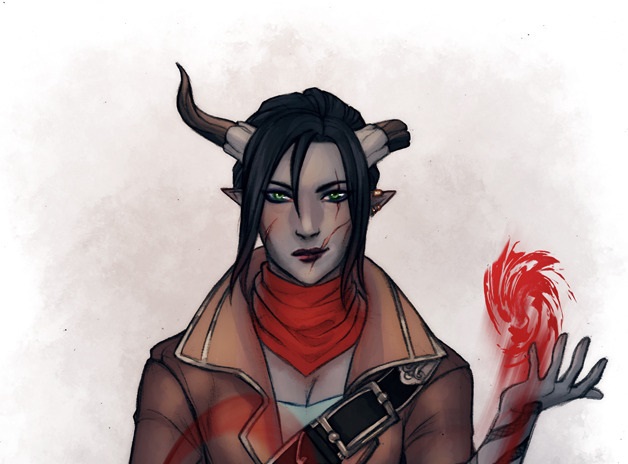Tiefling Horn Cutting
A grisly method of showing guilt.
History
Horn cutting has been used since presumably the first age. Many legends, myths, and fantastical stories in tiefling mythology frequently make mention of those with cut horns, with some people being highlighted for their rebellious nature, while others are scorned and hated for their devious ways. Scholars suggest that the practice dates back to prehistory as a method for Tieflings to identify outsiders who had been exiled from clans for various reasons. It is believed that the systemitization of the horn cutting procedure was not slated until the Third Age, although as much of Tiefling history is intentionally left oral and unwritten, there is no true proof of this beyond the fact that more information about horn-cutting was beginning to circulate in human research texts.
Execution
Horn-cutting is highly formulaic in design, and various definitions of length and cuts can determine severity of a crime or grievance committed. This includes various indentations, grooves, ridges, cuts, and breaks into the horns.
Most important is how the horns relate to Tiefling society. The right horn of a Tiefling represents the self, as it dictates an act done by and of their own accord. The left horn of a Tiefling represents the other, and dictates an act that violated the community's laws or ethics, or someone's autonomy. As such, the crime committed dictates which of the horns is thus cut depending on the crime and its severity. There are many distinct trends that can be seen as repeated frequently throughout various tribes.
- Full, even cuts that leave a flat edge represent the most serious cases.
- Diagonal cuts with the flat edge pointing toward the individual's head represent crimes that were judged by peers.
- Diagonal cuts with the flat edge pointing away from the individual's head represent crimes that were either unproven, where guilt couldn't be properly acertained by punishment was given anyway.
- Horizontal grooves in the horn dictate represent repeat offenses on the right horn, and number of accomplices on the left horn.
- Vertical grooves represents type or length of repayment to society, and varies from tribe to tribe.
Right Horn Cuts
- 1/4th Right Horn - Inciting vandalism or rebellion
- 1/3rd Left Horn - Destruction of property and arson.
- Half Right Horn - Violence, beatings, or torture.
- 2/3rd Right Horn - Murder or Familicide of various types.
- 3/4th Right Horn - Sexual crimes or crimes against children.
- Base of Right Horn - Piracy, kidnapping, slavery.
Left Horn Cuts
- 1/4th Left Horn - Alcoholism, gambling.
- 1/3rd Left Horn - Forgery, impersonation, or cheating.
- Half Left Horn - Adultery or infidelity.
- 2/3rd Left Horn - Insolvency, debtor, extortion, or commercial crimes.
- 3/4 Left horn - Incitement, conspiracy, mutiny, and acts against the tribe.
- Base of Left Horn - Exile.
Components and tools
Tribes use bone saws for the majority of horn cuttings. These are usually of a ceremonial nature reserved for punishment in particular, although some tribes can't afford such things. Various anaesthetics or alcohols may sometimes be used for pain management, although some communities prefer to spite those getting punished by letting them suffer. Explicit is that no community willfully uses something that would not give a proper cut to the horn, such as a sword, axe, or hammer, as these would make improper damages to the horn that can not be distinguished by other clans.
Observance
Punishment is meted out dependent on the crime. Tiefling culture assumes guilt until proven innocence. The offender is allowed to explain their offenses away, but a jury of peers from the tribe makes the final determination of innocence or guilt. Crimes that lean toward a split vote of guilt or innocence can be waived by either lighter punishment or community service, or otherwise have punishment delayed for the hope of good behaviour later.



Comments